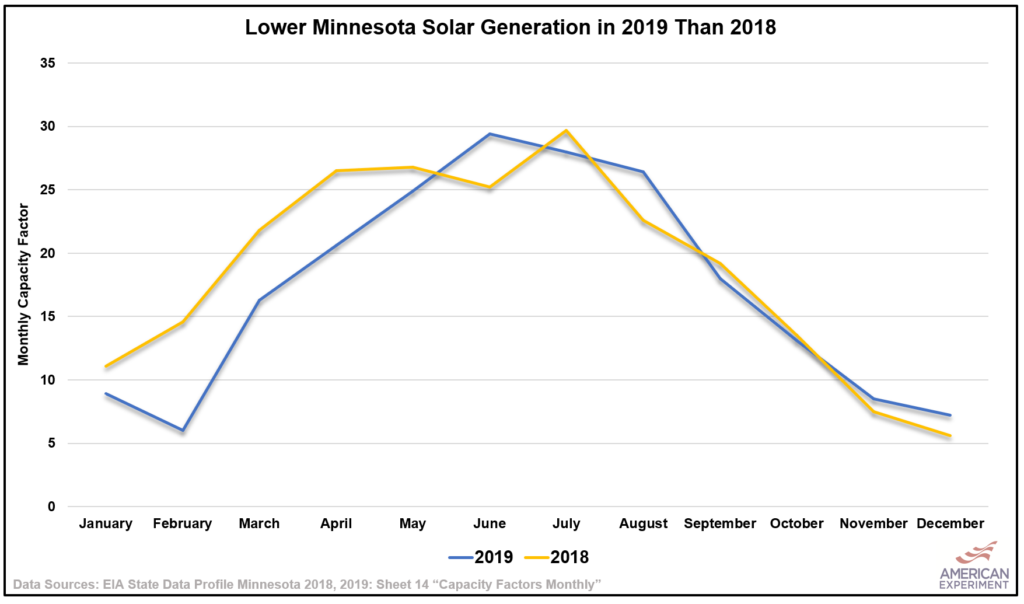Minnesota Solar Panels Less Productive in 2019 Than 2018
Data from the U.S. Energy Information Administration (EIA) show that solar panels in Minnesota were less productive in 2019 than they were in 2018.
The capacity factor, or amount of electricity solar panels produced compared to their theoretical maximum output, was just 17.3 percent in 2019, compared to 18.6 percent the year prior. This constitutes a nearly seven percent decline in solar productivity year-over-year.
However, 2019 was a record-high year for electricity generated from solar panels because even though solar panels were less productive in 2019 than in 2018, there were more solar panels in service during 2019, helping to make up for lost productivity.
Solar production was likely lower due to the most miserable February of my life, which consisted of multiple inches of snow nearly every day. In fact, that February broke numerous snowfall records, which helps explain why solar panels only produced six percent of their potential output when they had generated 14.6 percent the year before.

The challenge of trying to run a grid using wind and solar isn’t that the sun doesn’t often shine and the wind often doesn’t blow, it’s the fact that we’re never quite sure when there will be sufficient sunlight or wind to keep the lights on if they decide to not show up to work.
This is why Xcel Energy’s plan to shut down its coal plants and built massive amounts of wind turbines, solar panels, and natural gas plants is such a bad deal for ratepayers. The company is building a new electric grid that relies upon natural gas, with expensive hood ornaments that only work when the wind is blowing or the sun is shining.